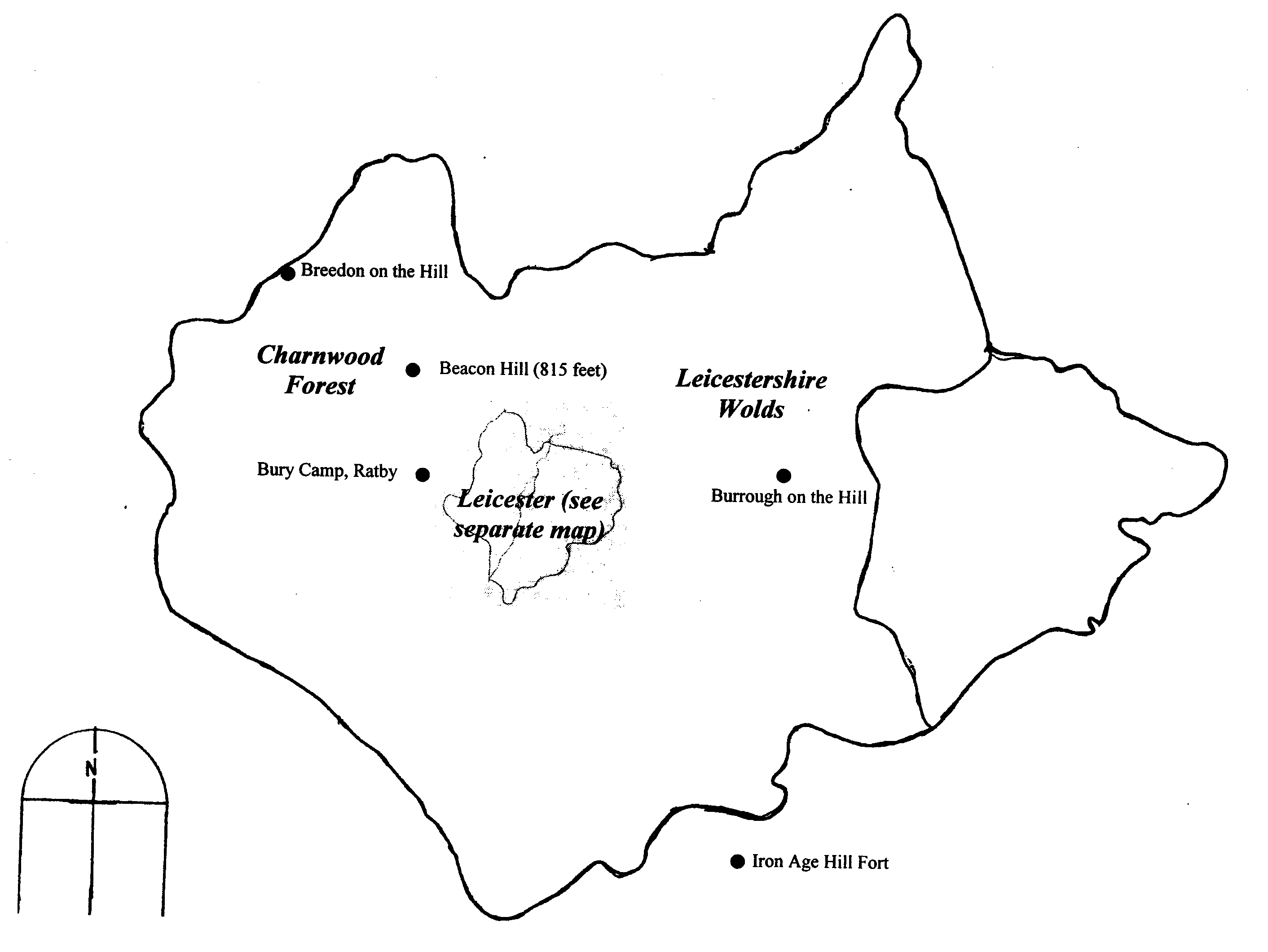
Textbook Unit 2: Leicestershire Before the Romans (300,000BC to AD43)
Page 2 of 2 (Previous)
The less important settlements were small groups of houses called Farmsteads, which were usually located in the better farming land. These would have just a few houses, and would be homes to a small group of people. One example was at Enderby
It was the latter form of settlement that was first built at Leicester in the last century before christ, which grew up to cover a site of about 40acres by the time the Romans arrived, along the eastern side of the River Soar.
The town would have been built of Round Houses, low, thatched (round) buildings which would be home to the families. Further round buildings would be added as outbuildings. These houses would be set in their own piece of land, where animals would be kept. Around the outside of the village, there would have been the larger plots of land used for growing crops.
As more and more families arrived, the town grew. Neighbouring settlements began to trade with Leicester and each other. Leicester was built at a crossing point over the River Soar, so people would begin to meet there and trade, rather than heading all the way to other villages.
As the village developed further, walls of woven sticks were built around the outside of the city, and 4 gates were constructed. At the heart of Leicester was a cross-roads, which was the main trading place.
Leicester was controlled by the iron age Corieltauvi tribe and by the time the Romans arrived may well have been the tribal capitol.
- The river supplied an unlimited amount of drinking water for humans and animals, and also allowed for the irrigation of crops.
- Leicester was located at the best crossing point on the river, and therefore people travelling to trade with other villages and even with other tribes around the country would travel through. This led to a perfect opportunity for trading, and a market grew up in the centre.
- The river had flooded many times over the centuries, depositing a fertile "Alluvium" (silt) along its banks. This was excellent for growing crops in.
Why were the major settlements built as Hill Forts?
This question is worth 10 marks, and should be at least 150 words long.
- Who were the dominant tribe in the Leicester area? (1)
- When did written records start to appear? (1)
- What type of buildings would have been found in Leicester? (1)
- Name 2 sites of Hill Forts. (2)
- How was the city defended (2 points)? (2)
- Why was the river important in Leicester's Growth?(3)
Total of 10 marks. Remember, you need at least one point for each mark.

During the Iron Age, the majority of people were involved in farming. Whilst we do not know all the crops that they grew in this area, we do know that wheat was grown (two types of wheat were used in Leicestershire, Emmer and Spelt) because charred wheat seeds were found in excavations at Enderby. Experiments carried out in a re-constructed iron age farm at Butser in Hampshire have proved that they were able to gain high crop yields. In fact, the amounts of crops produced often far outweighed demand, and it was this surplus that encouraged the Romans to come to Britain.
The harvesting would have been carried out by hand, as would threshing. It would then be ground into flour by querns, fragments of which have been found all over the area, including one in Castle Street in Leicester.
The soil would have been "ploughed" using an ard (some might say that using one was 'ard work) which, rather than turing the soil over like modern ploughs simply disturbed the topsoil. Please see the diagram of an ard below.
- Why were the fields roughly square in shape? (1)
- Why were the fields smaller than many of those today?(1)
- Describe the crops used in the iron age. (8)
Total - 10 marks.
Your tutor may wish you to submit your written work, set you questions, or just ask you to read the pages.
The fire would be lit in a hearth at the centre of the house. There was no chimney and the smoke was allowed to filter through the thatch. There were two reasons for this:
- Any hole in the roof would have let water in
- A hole in the roof would create a through draft, and the resulting danger of sparks setting fire to the roof.